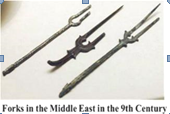题目内容
A.What are the stamps used for?
B.Let’s come up with some good ideas.
C.Have you ever been late for school?
 新非凡教辅冲刺100分系列答案
新非凡教辅冲刺100分系列答案Some Movie Award of Golden Globes 2018

Best Drama(剧情类电影) |
|
Actor in a Movie Drama |
|
Actress in a Movie Drama |
Three Billboards Outside Ebbing, Missouri |
Director |
|
Musical or Comedy |
|
Cartoon |
|
1.Which movie is the best cartoon of the 75th Golden Globe Awards?
A.Coco. B.Lady Bird. C.The Shape of Water.
2.Guillermo del Toro became the best of the 75th Golden Globe Awards.
A.actor B.actress C.director
3.Lady Bird is a .
A.drama B.cartoon C.comedy
在英语课上,同学们就自己喜欢的旅游方式展开了讨论。请你根据下表内容,用英语写一篇短文,汇报讨论结果,并谈谈自己的想法。
团队旅游 | 有导游,不会迷路 |
不必自己找旅馆 | |
结识朋友,相互帮助 | |
个人旅游 | 自由安排时间 |
选择自己喜欢的旅游景点 | |
学会照顾自己 | |
你的想法 | …… |
注意:1. 文章必须包括表中全部内容可适当增加细节;
2. 想法至少在两句以上;
3. 词数为80一100,开头已给出,不计入总词数。
参考词汇:团队旅游travel with a group;一个人旅游travel alone;安排arrange
Recently, we have discussed the ways to go travelling. Here is the result.
Some students choose to travel with a group. ____________________________________________________________________________________________________________________________________________________________________________________________________________________________________________________________________________________________________________________________________________________________________________________________________________________________________


 B.
B. C.
C.

 Three Billboards Outside Ebbing .Missouri
Three Billboards Outside Ebbing .Missouri Gary Oldman, darkest Hour
Gary Oldman, darkest Hour Frances McDormand,
Frances McDormand, Guillermo del Toro, The Shape of Water
Guillermo del Toro, The Shape of Water Lady Bird
Lady Bird Coco
Coco